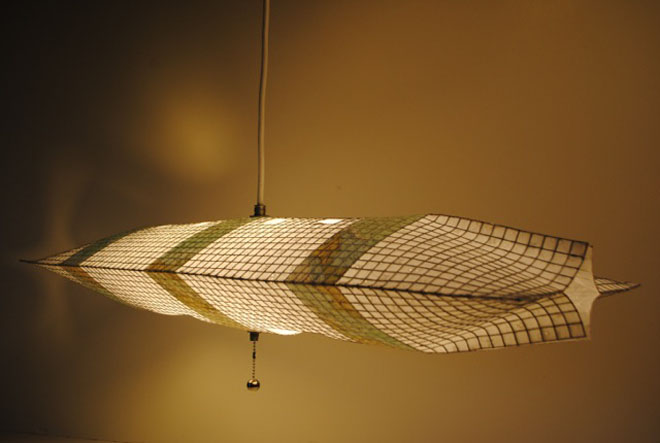Unleashing the Power of Light
AIA DESIGN THEORY – March 2013
Edited by Rebecca Falzano | Photography Sarah Beard Buckley
Understanding architect Joe Hemes’s favorite material: light.
Invisible and full of color, light defines our world, warms our hearts and our homes. It is earth’s primal energy source, and it has the power to transform our buildings and homes into renewable energy generators. Light is the preferred material of architect/artist Joe Hemes, whether it’s sunlight for solar energy, daylight to shape a room, or an illuminated sculpture to brighten the night. Hemes believes that designing with light can make our homes extraordinary.
Q: Why is daylight so important?
A: Biophilic design, proposed by biologist E. O. Wilson, involves the study of what many of us know instinctually: that our innate biological rhythms need to be more strongly connected to nature and the changing light of day. Homes should track the sun: east light is welcomed for bedrooms to help sync our circadian rhythms, south light is best for the kitchen and main rooms we live in all day, and north light is especially wonderful for artist studios. This is the tip of the design iceberg, which I fine-tune with an understanding of the client’s yearnings, the site attributes and Zen views, and the sculpting of rooms to live in. Light is amazing and tricky; it transfers color from the landscape into the interior and reflects interior colors onto other surfaces of the room. A room is invigorated when the light comes from two different directions, shifting intensities all day. I like narrow floor plans, which allow sunlight to penetrate the interior from either side and provide a more intimate connection to the outdoors. Christopher Alexander’s A Pattern Language has many essential recommendations for sunlight’s interaction in a home. One of my favorite patterns is “Filtered Light,” which uses plants to scatter color and organically textured light into a room. Perforated screens, stained glass, and prisms can also filter light, with entrancing stippled shadows and color patterns, adding to a room’s vibrancy.
Q: How can daylight be used to create architectural drama?
A: The Kimbell Art Museum designed by Louis I. Kahn uses a spine of reflected daylight to accentuate his powerful barrel vaults. Le Corbusier’s Notre Dame du Haut in Ronchamp is a spiritual light show, with a massive wall deeply punctured by various-sized truncated openings full of changing color and light. Emphasizing time, I like to scrape light along surfaces by locating windows directly adjacent to an interior wall or down on the floor so the sun’s constant movement is more evident. To define the realms of a home, I design bright areas at important meeting places and dark areas in transition spaces. Skylights are blue-sky windows to the world (think James Turrell’s Skyspaces), with light drifting down through the rafters for wonderful effects, enlarging a room and brightening its surfaces.
Q: How can we harness light using daylight control?
A: Our climate requires larger south-facing windows for passive solar heat gain. Window shading to reduce summer heat gain can be designed using deciduous trees, porch overhangs, and external sunshades or planted trellises, while allowing the lower-angled winter sun to warm the house. A horizontal light shelf works wonders to bounce daylight onto the ceiling, bringing light deeper into a room. I have designed daylighting for schools using these techniques and specifying glass attributes so that even on partly cloudy days classrooms require no artificial light. Studies have shown that day-lit classrooms improve student attendance, learning, and performance. Our schools and homes become better places in which to live and learn when we design with daylight.
Q: What about night light?
A: At night we are also drawn to the light, whether a campfire or the Milky Way. I love designing with light to create “illuminated sculptures” to enhance the architecture of homes, restaurants, stores, and lobbies. One of my goals is to create a sculptural form that’s as fascinating unlit during the day as it is when illuminated at night. Imagine a floating zeppelin form scattering a warm pool of light over a table, or a glowing orange fish attracting customers to the seafood case, or chandeliers designed as a line drawing of a flower with geometric sparks of light. Creating a calming ambiance in our overstimulating world is an essential part of my work—whether a glowing flower of light or a shoji-screen-like tower-form akin to Noguchi’s Akari Light Sculptures. With other sculptures, I explore the mystical by weaving a fabric of light filaments or projecting a kaleidoscope of color onto the surfaces of a dark room. My passion is designing with light, unleashing its power and pure energy to create a sun-warmed and daylight-enriched room, a glowing sculptural ambiance, or a magical light show.
For more information, see Resources on page 98.
American Institute of Architects
Maine AIA: 207-885-8888, aiamaine.org
HemesphereDesign:
207-232-6079, joehemes.com








